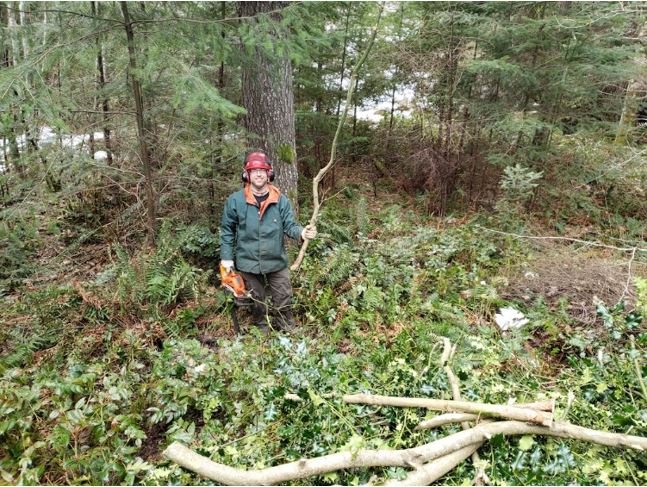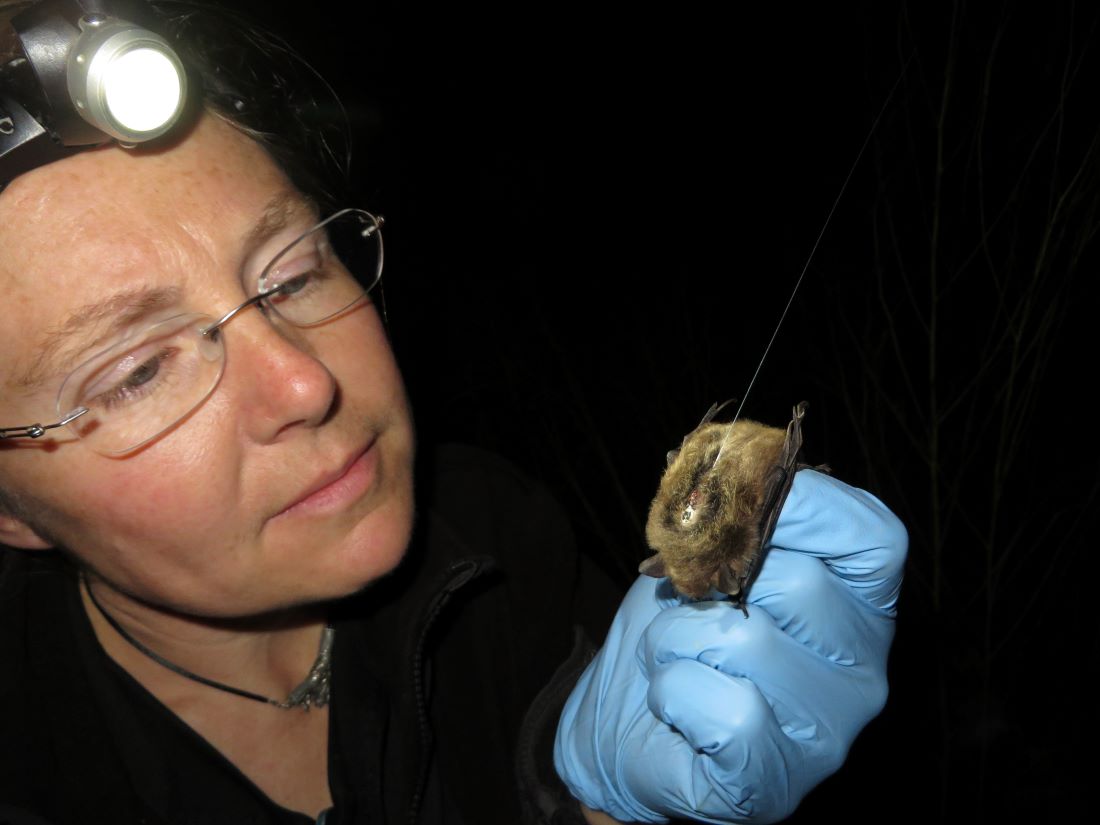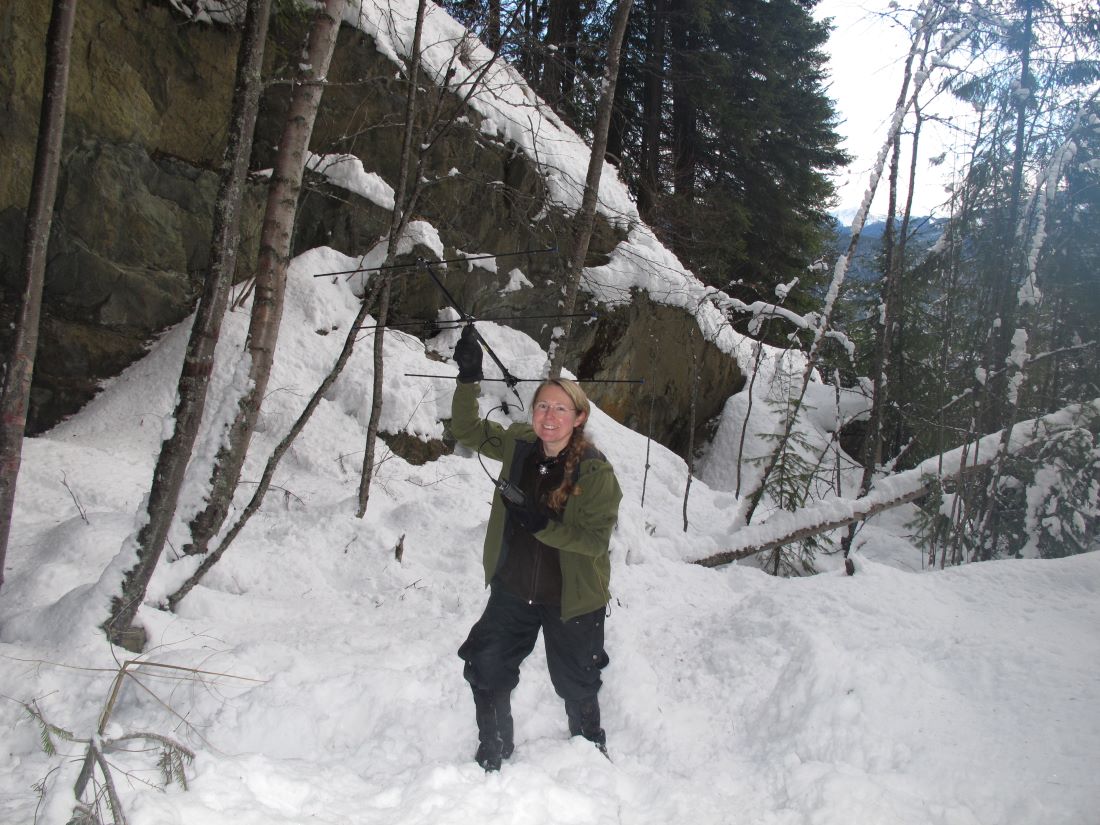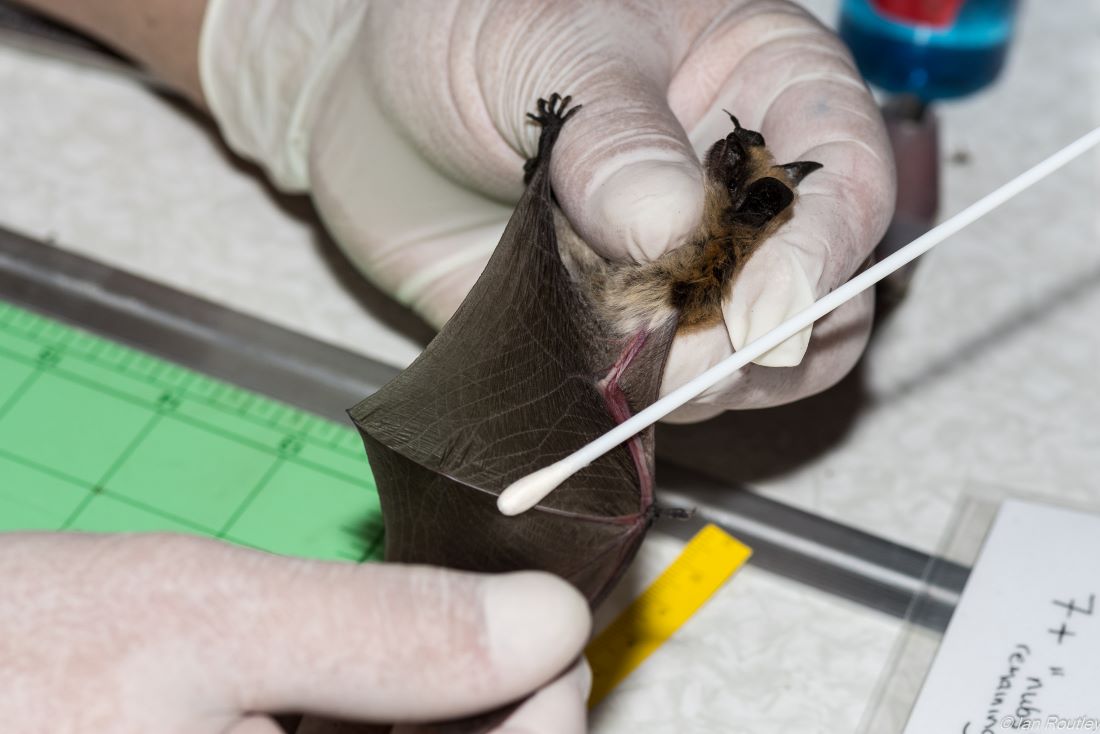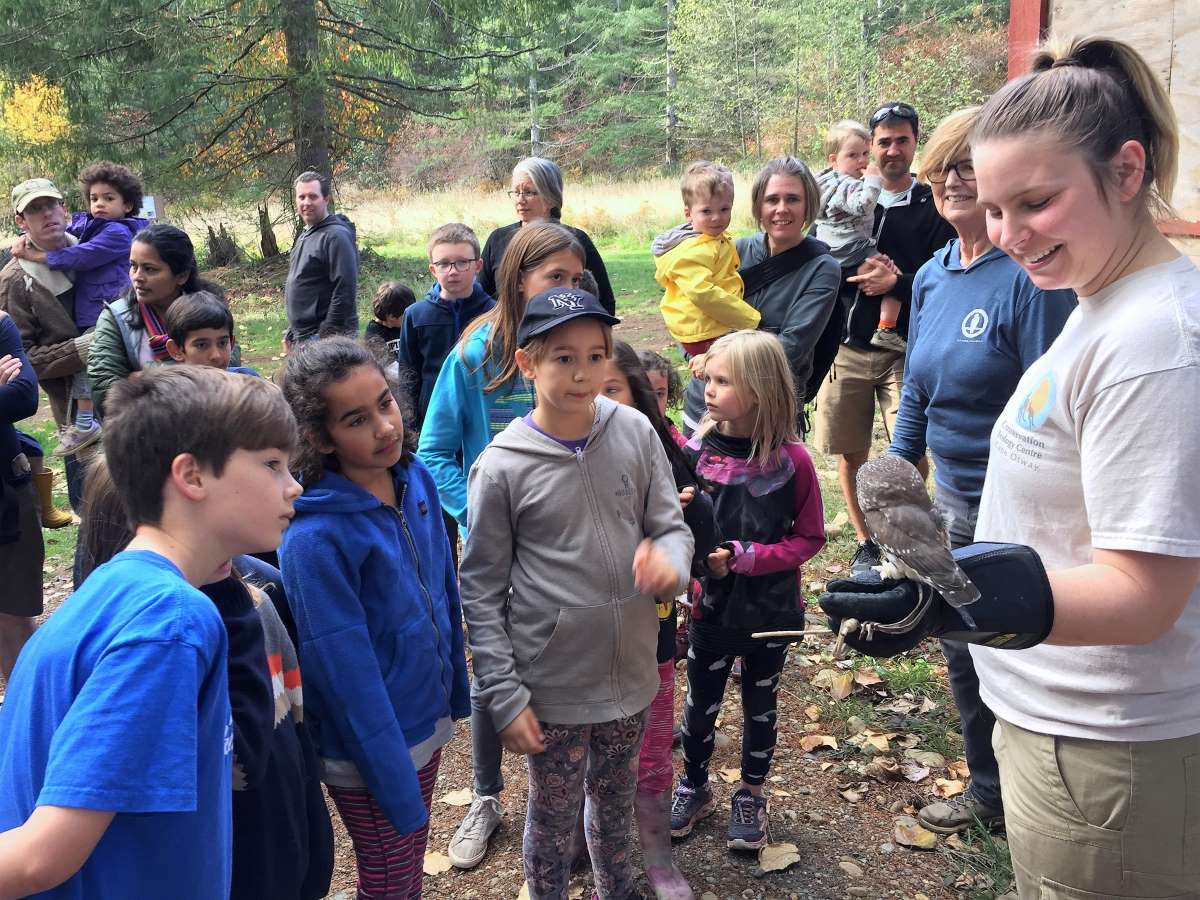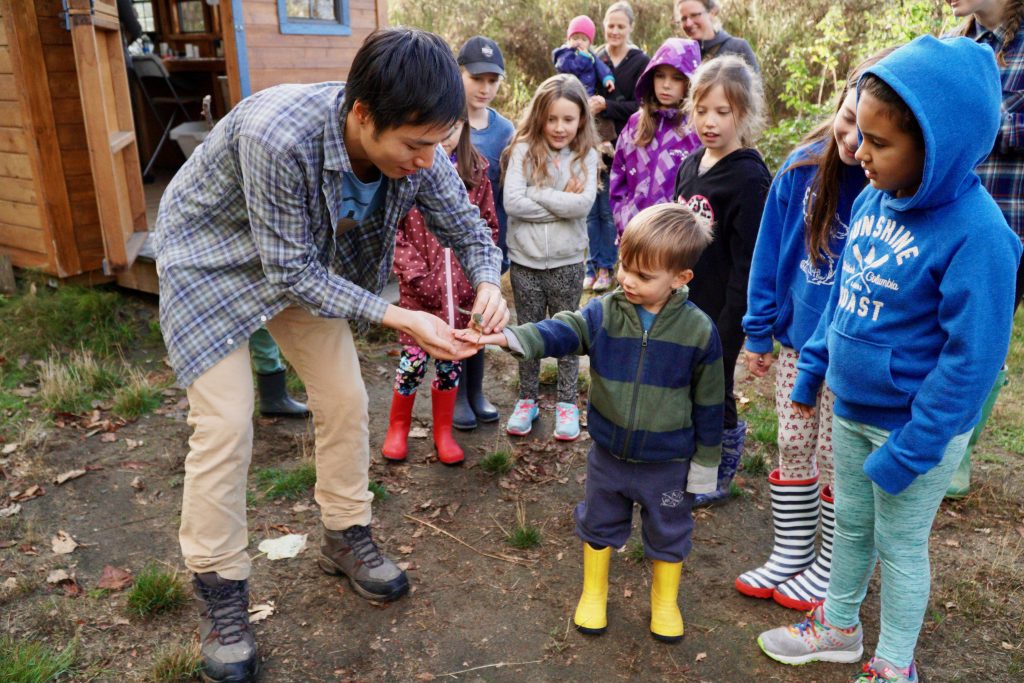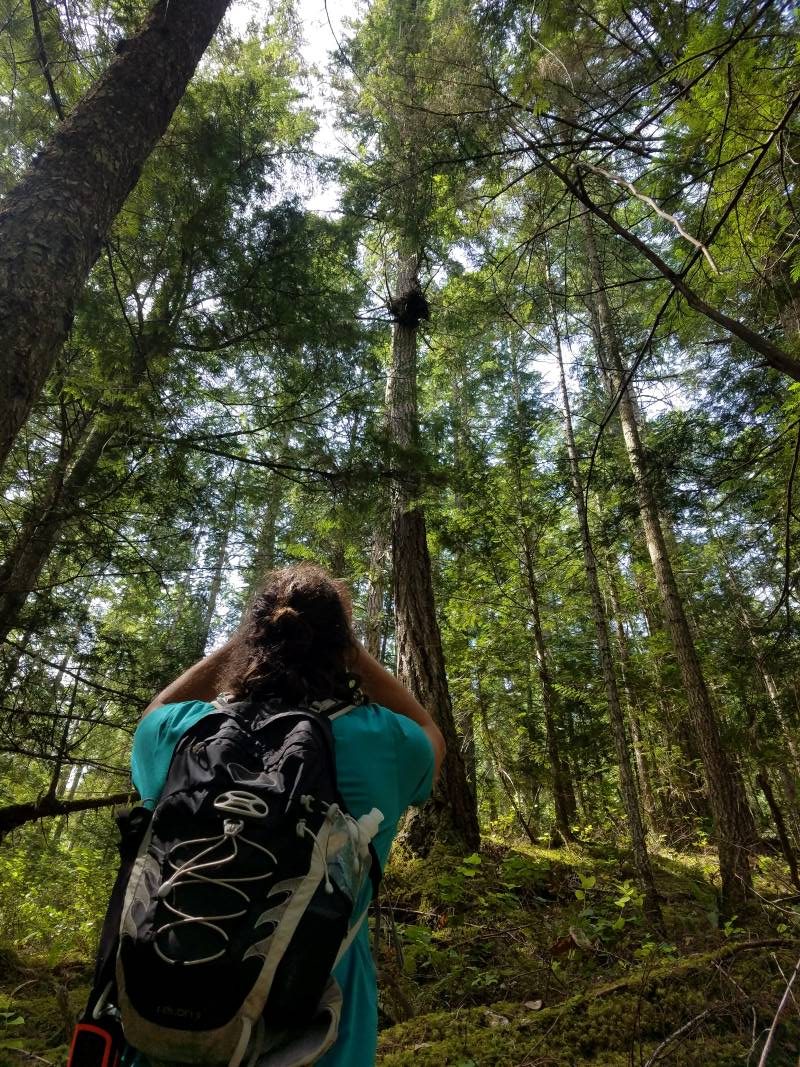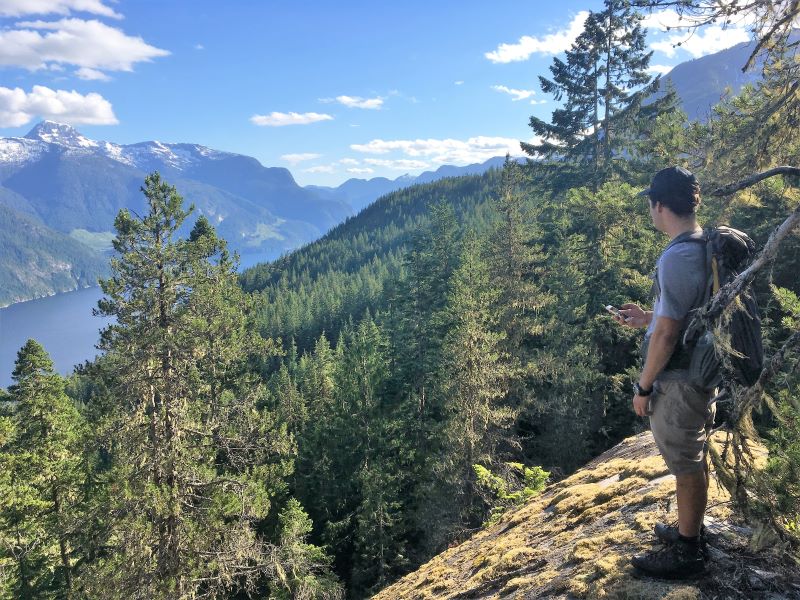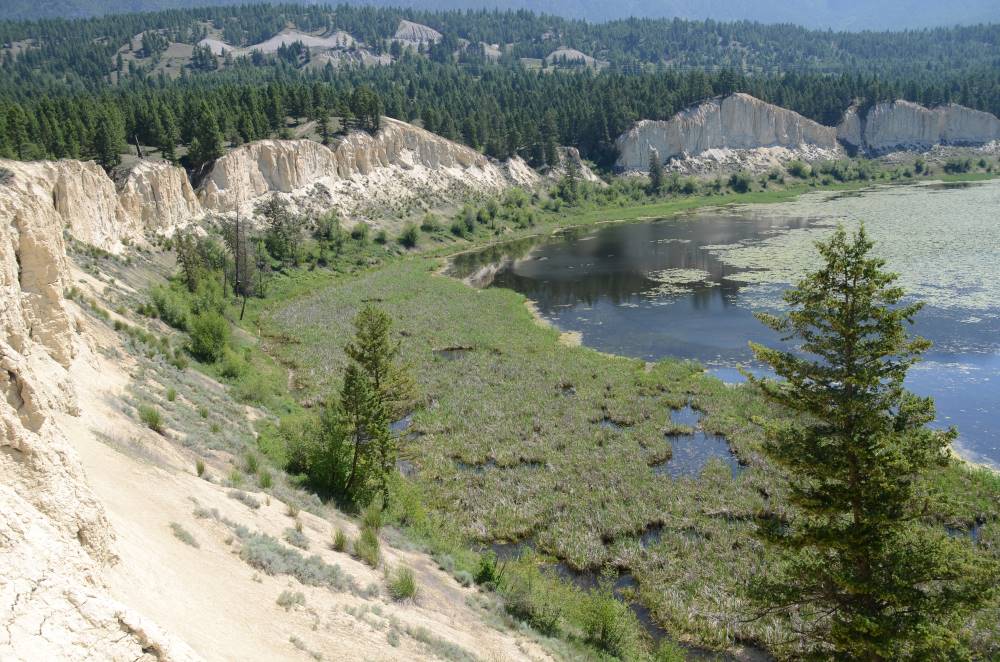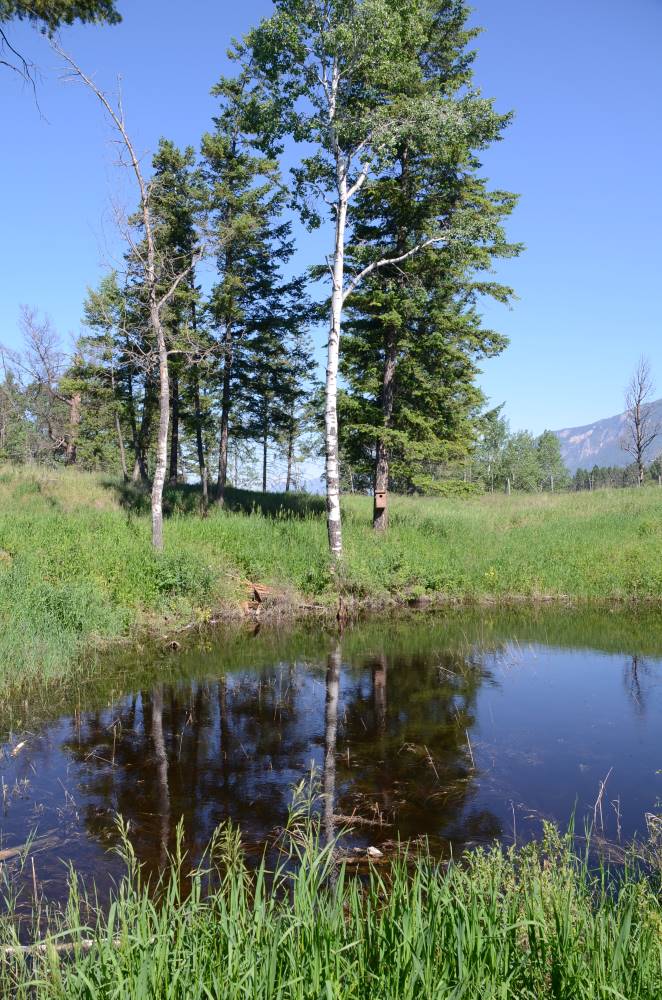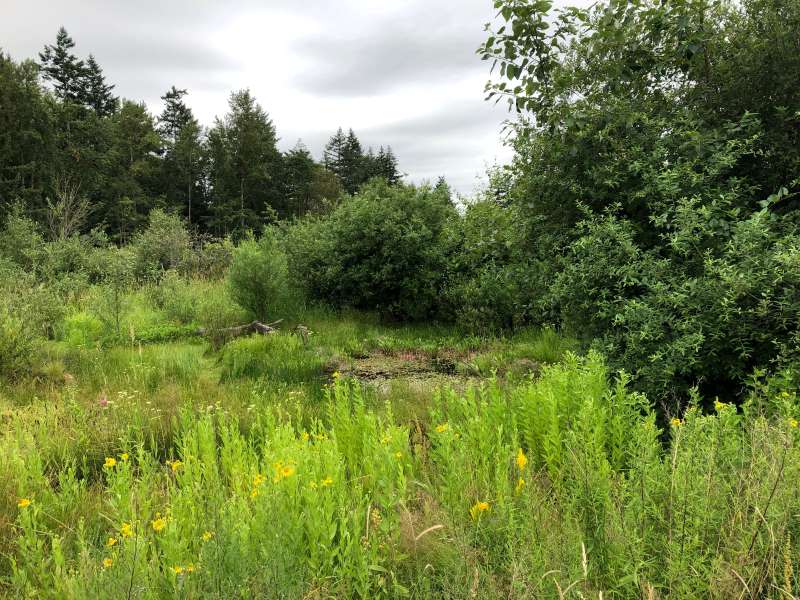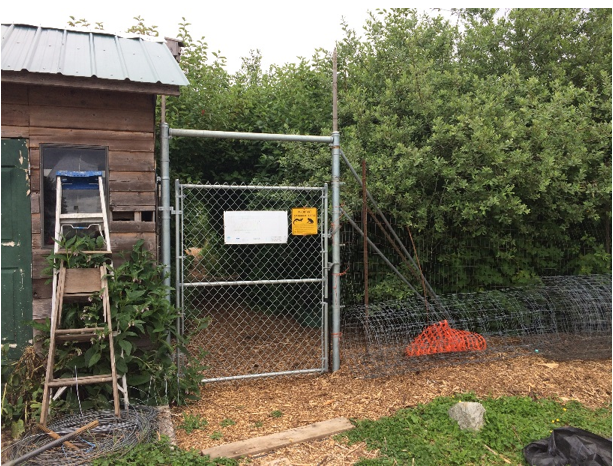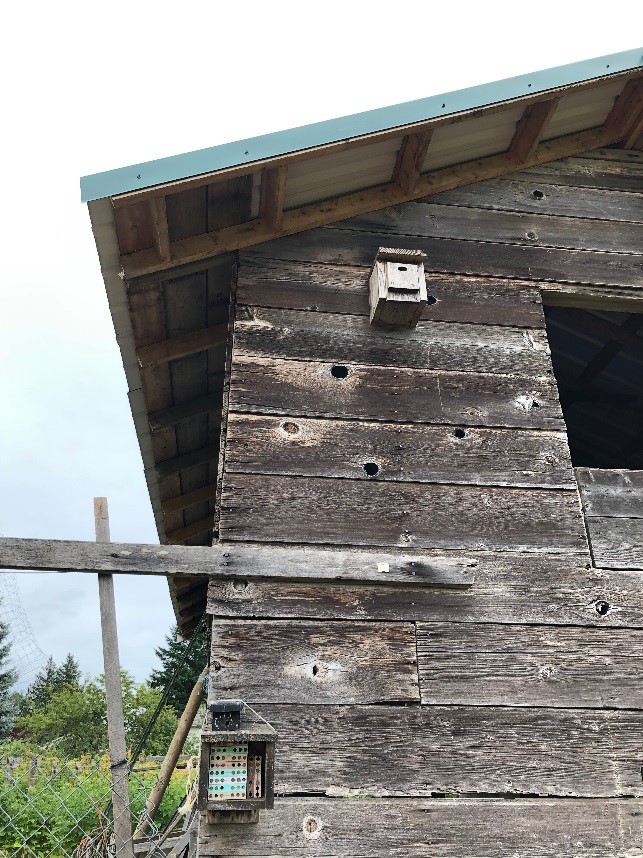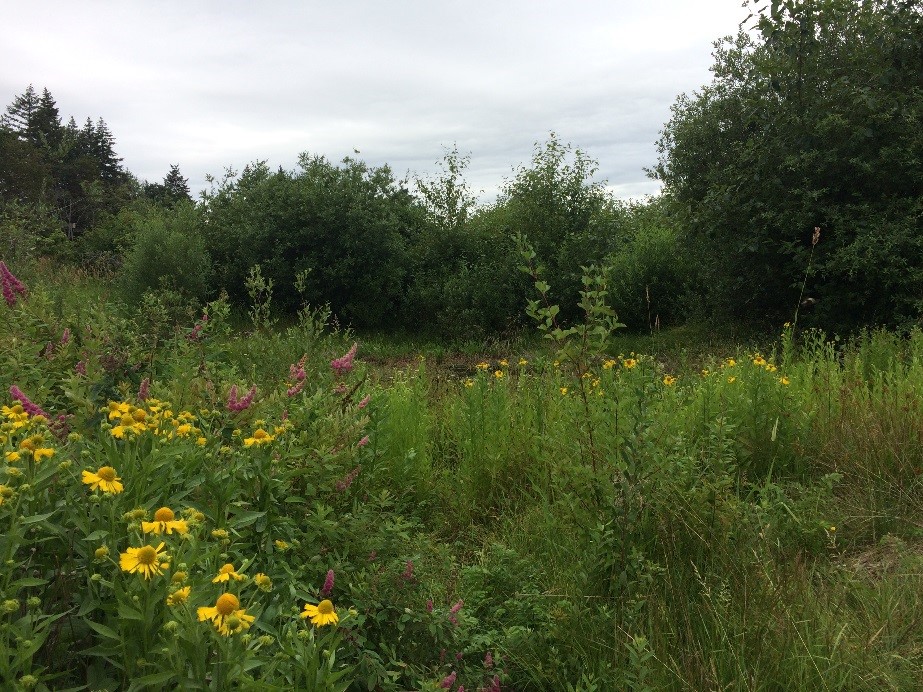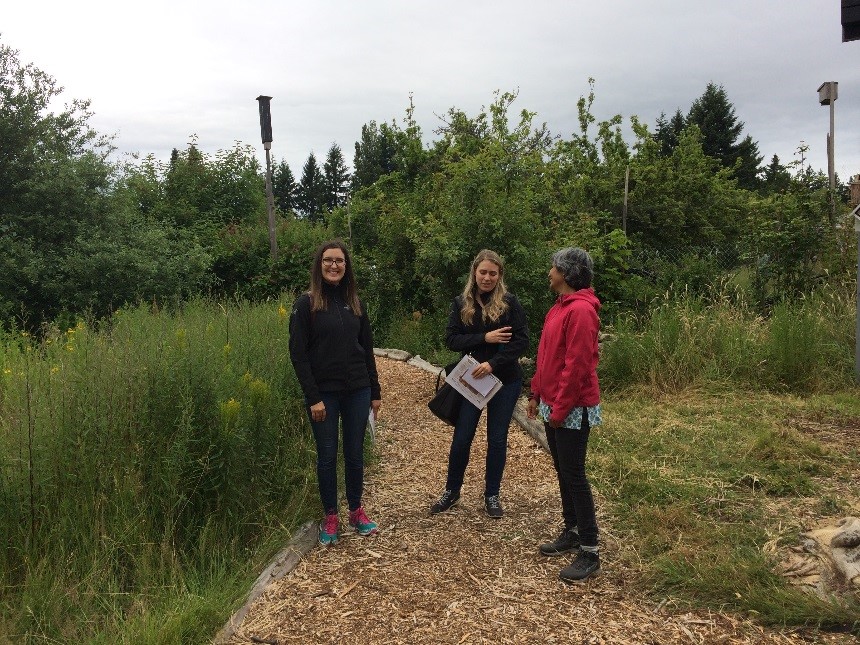BC Land Trusts own and protect 103,000[1] hectares of conservation lands in BC. Although securement of conservation lands is a critical first step, the work doesn’t end there because it is equally important to maintain and enhance the ecological values for which the property was protected. For many land trusts, finding funding to cover management costs can be difficult, particularly following fundraising campaigns to purchase the property. HCTF’s Land Stewardship Grant is one option for non-government organizations to access funding to cover management expenses on conservation lands.
For instance, the Denman Conservancy Association (DCA) received a Land Stewardship Grant from HCTF for $19,500 over three years to help with management costs on their Settlement Lands property. Located at the northern extent of the Coastal Douglas Fir (CDF) ecosystem, the Settlement Lands contain diverse habitats including wetlands, rocky outcrops, and mature second growth forest, which support a wide range of wildlife and habitats, including 14 wildlife species at risk.
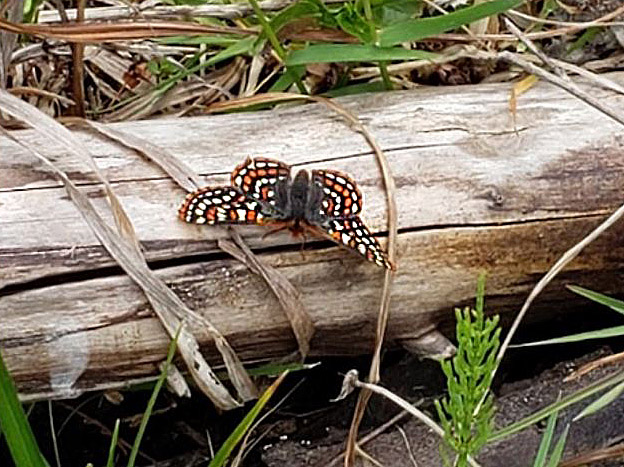
Taylor’s Checkerspot Butterfly – courtesy of Erika Bland
One of these species at risk is the Taylor’s Checkerspot butterfly which is red-listed in BC, and listed as Endangered under the federal Species at Risk Act. Denman Island is the only known breeding location in Canada. Some of the funds were used for habitat enhancement, including planting larval host plants and pollinator nectar plants, as well as butterfly monitoring and planning to improve habitat in the future. Other activities HCTF funded at the property include invasive species removal, fencing, wetland monitoring, trail decommissioning and maintenance, and information signage.
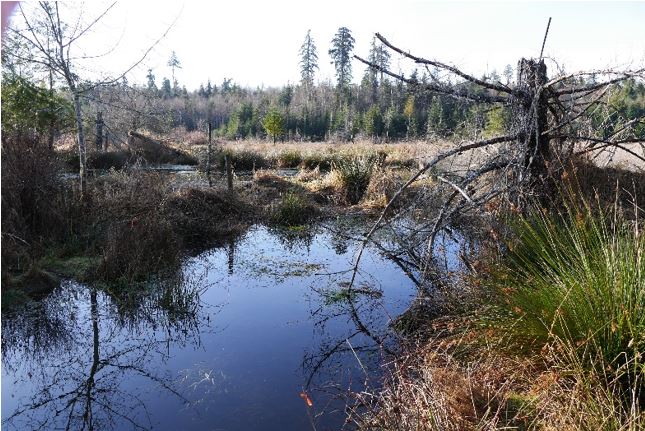
Beaver dam area at Homestead Marsh – courtesy of John Millen
“This funding was very important to ensure ecological values will be maintained and enhanced,” says Erika Bland, DCA Land Manger. “The fencing project in particular, which was carried out in collaboration with a neighbouring farmer, was critical to protecting the wetland on the property from cattle trespass.”
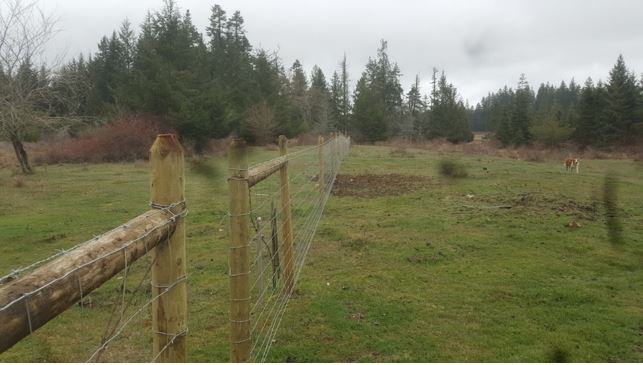
New fence to prevent cattle access.
The next funding intake for Land Stewardship Grants is now open, with an application deadline of October 16th. Visit our Land Stewardship Grant webpage for more information, including how to apply. This program was made possible through an endowment provided by the Province of British Columbia. This funding opportunity only comes once every three years, so don’t miss out!
[1] British Columbia NGO Conservation Areas Technical Working Group. 2017. BC NGO Conservation Areas Database – Fee Simple, Registerable Interests, and Unregisterable Interests (secured as of December 31, 2016). Digital data files. Last updated June 27, 2017.


